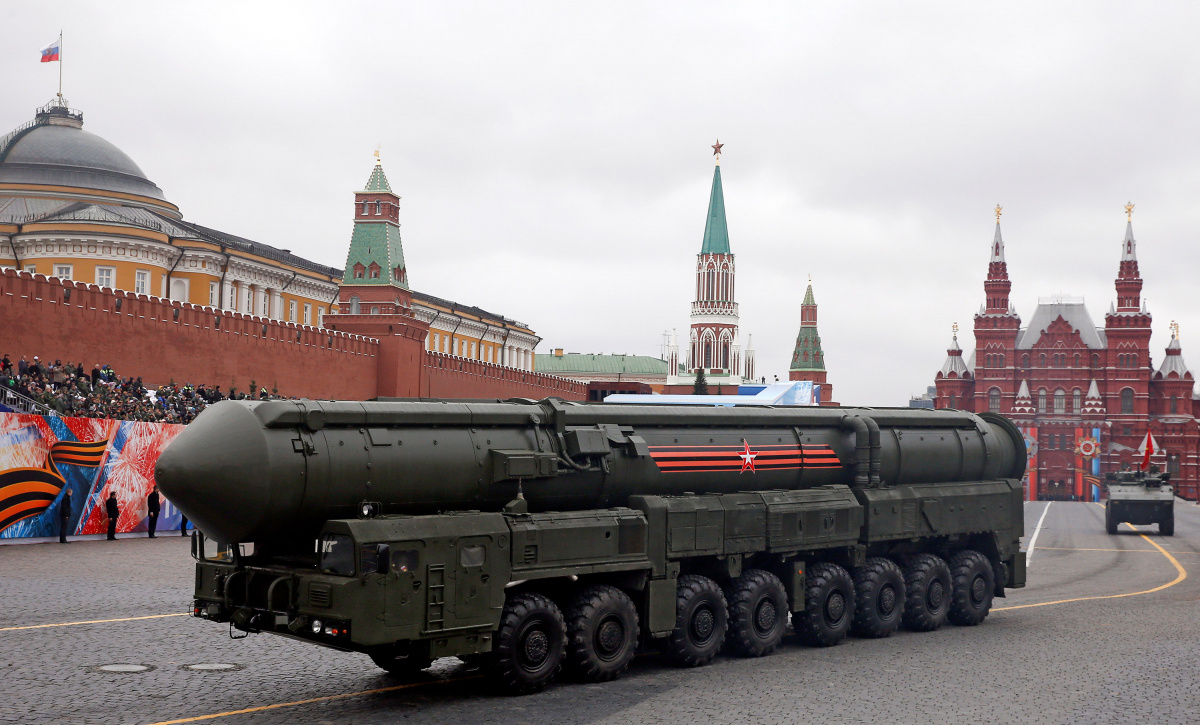- Joined
- Aug 15, 2008
- Messages
- 270
- Points
- 18
Just America try to cover it own ass from Hwasong ICBM, it sabotaged the Europeans deeply by strongly tearing up the INF Treaty with Putin. For Putin, this is a secret celebration.
Why America is not really affected?
Because IRBM by definition (500km to 5500km) can not strike most of USA from Russia! It merely affects Alaska (which was originally a Russian territory ) region only. If Russia don't deploy IRBM according to Treaty it had the lame European Ass covered from Putin mainly. If the Treaty is abolished Putin has Entire Europe covered by cheaper and higher numbered IRBMs, which Europeans are freaking too weak to counter.
Putin can extend the range of Iskanda missiles or make larger versions when Treaty is abolished.
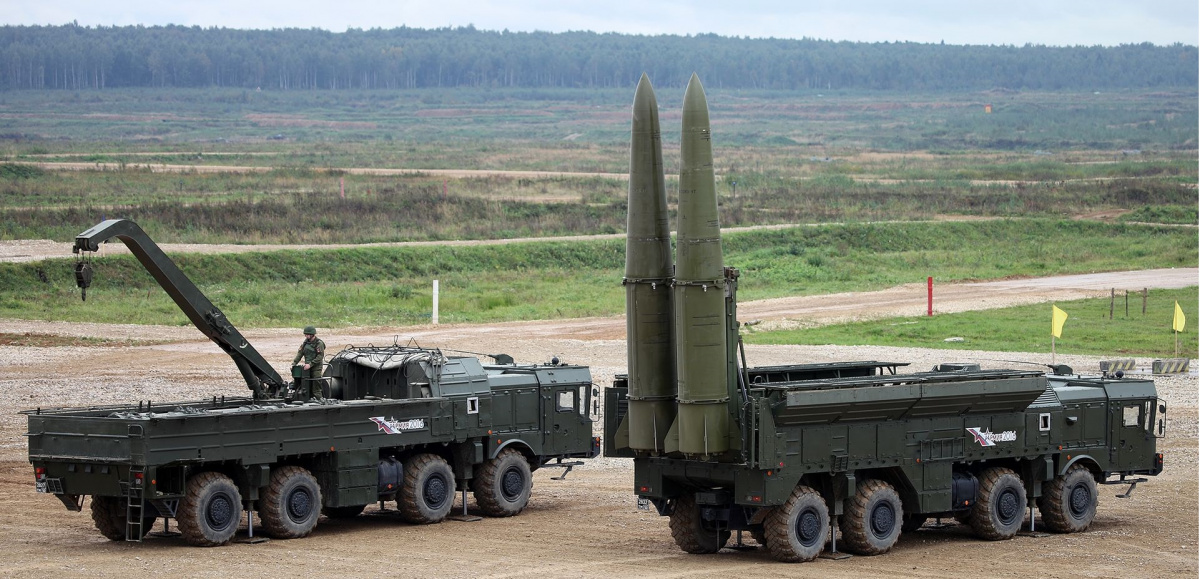
https://www.armscontrol.org/factsheets/INFtreaty
Why America is not really affected?
Because IRBM by definition (500km to 5500km) can not strike most of USA from Russia! It merely affects Alaska (which was originally a Russian territory ) region only. If Russia don't deploy IRBM according to Treaty it had the lame European Ass covered from Putin mainly. If the Treaty is abolished Putin has Entire Europe covered by cheaper and higher numbered IRBMs, which Europeans are freaking too weak to counter.
Putin can extend the range of Iskanda missiles or make larger versions when Treaty is abolished.

https://www.armscontrol.org/factsheets/INFtreaty
The Intermediate-Range Nuclear Forces (INF) Treaty at a Glance
Contact: Daryl Kimball, Executive Director, (202) 463-8270 x107; Kingston Reif, Director for Disarmament and Threat Reduction Policy, (202) 463-8270 x104
Updated: June 2017
The 1987 Intermediate-Range Nuclear Forces (INF) Treaty required the United States and the Soviet Union to eliminate and permanently forswear all of their nuclear and conventional ground-launched ballistic and cruise missiles with ranges of 500 to 5,500 kilometers. The treaty marked the first time the superpowers had agreed to reduce their nuclear arsenals, eliminate an entire category of nuclear weapons, and utilize extensive on-site inspections for verification. As a result of the INF Treaty, the United States and the Soviet Union destroyed a total of 2,692 short-, medium-, and intermediate-range missiles by the treaty's implementation deadline of June 1, 1991.
The United States first alleged in July 2014 that Russia is in violation of its INF Treaty obligations “not to possess, produce, or flight-test” a ground-launched cruise missile having a range of 500 to 5,500 kilometers or “to possess or produce launchers of such missiles.” Subsequent State Department assessments in 2015, 2016, and 2017 repeated these allegations. In March 2017, a top U.S. official confirmed press reports that Russia had deployed the noncompliant missile. Russia denies that it is in violation of the agreement.
History
U.S. calls for the control of intermediate-range missiles emerged as a result of the Soviet Union's domestic deployment of SS-20 intermediate-range missiles in the mid-1970s. The SS-20 qualitatively improved Soviet nuclear forces in the European theater by providing a longer-range, multiple-warhead alternative to aging Soviet SS-4 and SS-5 single-warhead missiles. In 1979, NATO ministers responded to the new Soviet missile deployment with what became known as the "dual-track" strategy-a simultaneous push for arms control negotiations with the deployment of intermediate-range, nuclear-armed U.S. missiles (ground-launched cruise missiles and the Pershing II) in Europe to offset the SS-20. Negotiations, however, faltered repeatedly while U.S. missile deployments continued in the early 1980s.
INF negotiations began to show progress once Mikhail Gorbachev became the Soviet general-secretary in March 1985. In the fall of the same year, the Soviet Union put forward a plan to establish a balance between the number of SS-20 warheads and the growing number of allied intermediate-range missile warheads in Europe. The United States expressed interest in the Soviet proposal, and the scope of the negotiations expanded in 1986 to include all U.S. and Soviet intermediate-range missiles around the world. Using the momentum from these talks, President Ronald Reagan and Gorbachev began to move toward a comprehensive INF elimination agreement. Their efforts culminated in the signing of the INF Treaty on December 8, 1987, and the treaty entered into force on June 1, 1988.
Elimination Protocol
The INF Treaty's protocol on missile elimination named the specific types of ground-launched missiles to be destroyed and the acceptable means of doing so. Under the treaty, the United States committed to eliminate its Pershing II, Pershing IA, and Pershing IB ballistic missiles and BGM-109G cruise missiles. The Soviet Union had to destroy its SS-20, SS-4, SS-5, SS-12, and SS-23 ballistic missiles and SSC-X-4 cruise missiles. In addition, both parties were obliged to destroy all INF-related training missiles, rocket stages, launch canisters, and launchers. Most missiles were eliminated either by exploding them while they were unarmed and burning their stages or by cutting the missiles in half and severing their wings and tail sections.
Inspection and Verification Protocols
The INF Treaty's inspection protocol required states-parties to inspect and inventory each other's intermediate-range nuclear forces 30 to 90 days after the treaty's entry into force. Referred to as "baseline inspections," these exchanges laid the groundwork for future missile elimination by providing information on the size and location of U.S. and Soviet forces. Treaty provisions also allowed signatories to conduct up to 20 short-notice inspections per year at designated sites during the first three years of treaty implementation and to monitor specified missile-production facilities to guarantee that no new missiles were being produced.
The INF Treaty's verification protocol certified reductions through a combination of national technical means (i.e., satellite observation) and on-site inspections-a process by which each party could send observers to monitor the other's elimination efforts as they occurred. The protocol explicitly banned interference with photo-reconnaissance satellites, and states-parties were forbidden from concealing their missiles to impede verification activities. Both states-parties could carry out on-site inspections at each other's facilities in the United States and Soviet Union and at specified bases in Belgium, Italy, the Netherlands, the United Kingdom, West Germany, and Czechoslovakia.
The INF Treaty Today
States-parties' rights to conduct on-site inspections under the treaty ended on May 31, 2001, but the use of surveillance satellites for data collection continues. The INF Treaty established the Special Verification Commission (SVC) to act as an implementing body for the treaty, resolving questions of compliance and agreeing on measures to "improve [the treaty's] viability and effectiveness." Because the INF Treaty is of unlimited duration, states-parties can convene the SVC at any time, and the commission continues to meet today. The most recent SVC session took place November 15-16, 2016 and was attended by Russia, Belarus, Kazakhstan, and Ukraine. The United States called the meeting to raise its concerns about Russia’s violation of the Treaty.
The INF ban originally applied only to U.S. and Soviet forces, but the treaty's membership expanded in 1991 to include successor states of the former Soviet Union. Today, Belarus, Kazakhstan, and Ukraine join Russia and the United States in the treaty's implementation. Turkmenistan and Uzbekistan possessed INF facilities (SS-23 operating bases) but forgo treaty meetings with the consent of the other states-parties.
Although active states-parties to the treaty total just five countries, several European countries have destroyed INF-banned missiles since the end of the Cold War. Germany, Hungary, Poland, and the Czech Republic destroyed their intermediate-range missiles in the 1990s, and Slovakia dismantled all of its remaining intermediate-range missiles in October 2000 after extensive U.S. prodding. On May 31, 2002, the last possessor of intermediate-range missiles in eastern Europe, Bulgaria, signed an agreement with the United States to destroy all of its INF Treaty-relevant missiles. Bulgaria completed the destruction five months later with U.S. funding.
In recent years, Russia has raised the possibility of withdrawing from the INF Treaty. Moscow contends that the treaty unfairly prevents it from possessing weapons that its neighbors, such as China, are developing and fielding. Russia also has suggested that the proposed U.S. deployment of strategic anti-ballistic missile systems in Europe might trigger a Russian withdrawal from the accord, presumably so Moscow can deploy missiles targeting any future U.S. anti-missile sites. Still, the United States and Russia issued an October 25, 2007, statement at the United Nations General Assembly reaffirming their “support” for the treaty and calling on all other states to join them in renouncing the missiles banned by the treaty.
Reports began to emerge in 2013 and 2014 that the United States had concerns about Russia's compliance with the INF Treaty. In July 2014 the U.S. State Department officially assessed Russia to be in violation of the agreement by producing and testing an illegal ground-launched cruise missile.
Russia denies that it is breaching the agreement and has raised its own concerns about Washington’s compliance. Moscow is charging that the United States is placing a missile defense launch system in Europe that can also be used to fire cruise missiles, using targets for missile defense tests with similar characteristics to INF Treaty-prohibited intermediate-range missiles, and making armed drones that are equivalent to ground-launched cruise missiles.
U.S. Defense and State Department officials had publicly stated that they believe that the Russian cruise missiles at issue have not been deployed. But an October 19, 2016 report in The New York Times cited anonymous U.S. officials expressing concern that Russia is producing more missiles than needed solely for flight testing, raising fears that Moscow may be on the verge of deploying the missile.
The United States and Russia met in the SVC for the first time in 13 years in November 2016 in Geneva “to discuss questions relating to compliance with the obligations assumed under” the 1987 agreement, according to the State Department. The United States called the meeting over alleged Russian treaty violations, took place in Geneva on November 15-16.
A February 14, 2017, report in The New York Times cited U.S. officials declaring that Russia had deployed an operational unit of the treaty noncompliant cruise missiles. On March 8, 2017, General Paul Selva, the vice chairman of the Joint Chiefs of Staff, confirmed press reports that Russia had deployed a ground-launched cruise missile that “violates the spirit and intent of the Intermediate Nuclear Forces Treaty. According to Selva, the Pentagon believes that the Russians deployed the missile in question as a signal to NATO forces in Eastern Europe. The Trump administration is reportedly considering measures to pressure Moscow to return to treaty compliance.
In April 2017, the U.S. State Department released its annual assessment of Russian compliance with key arms control agreements. For the fourth consecutive year, this report alleged Russian noncompliance with the INF Treaty. The 2017 State Department report lists new details on the steps Washington took in 2016 to resolve the dispute, including convening a session of the SVC, and providing Moscow with further information on the violation.
The report says the missile in dispute is distinct from two other Russian missile systems, the R-500/SSC-7 Iskander GLCM and the RS-26 ballistic missile. The R-500 has a Russian-declared range below the 500-kilometer INF Treaty cutoff, and Russia identifies the RS-26 as an intercontinental ballistic missile treated in accordance with the New Strategic Arms Reduction Treaty (New START). The report also appears to suggest that the launcher for the allegedly noncompliant missile is different from the launcher for the Iskander.
For its part, the Russian Foreign Ministry responded by disputing the accusation and reiterating its own allegations of treaty noncompliance by the United States.
Posted: June 22, 2017
Posted: February 14, 2017



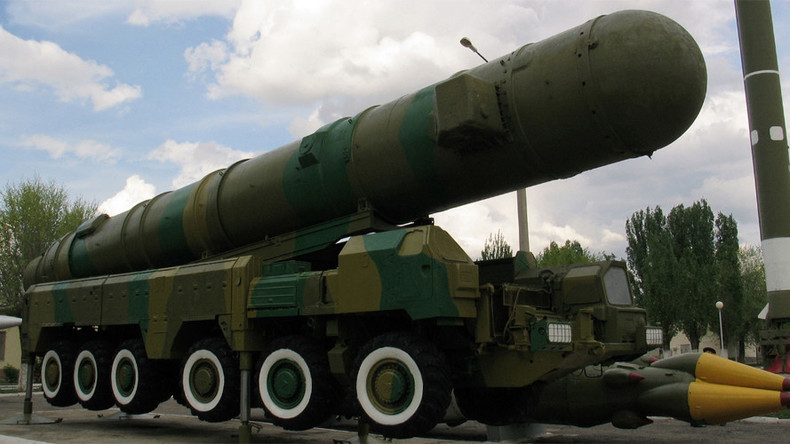
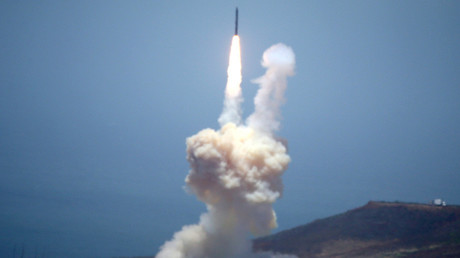 US defense bill authorizes development of ‘INF treaty-compliant’ mid-range missile
US defense bill authorizes development of ‘INF treaty-compliant’ mid-range missile 
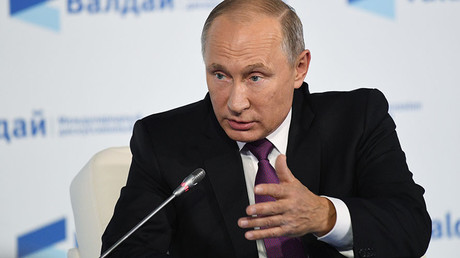 ‘We gave you uranium, you repaid us by bombing Belgrade’: Putin slams US over nuclear treaties
‘We gave you uranium, you repaid us by bombing Belgrade’: Putin slams US over nuclear treaties 

